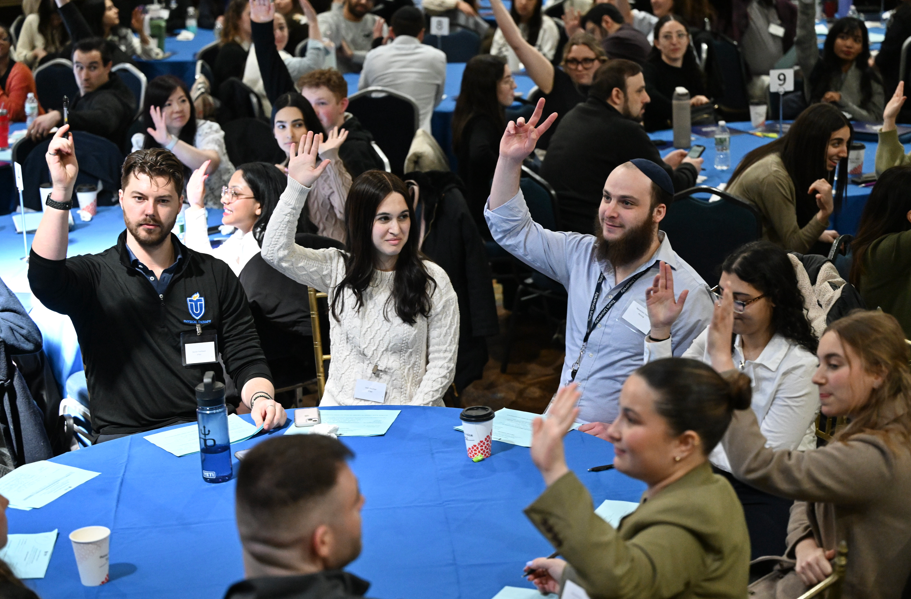Showcasing the Power of Collaboration in Healthcare
Touro School of Health Sciences’ 12th Annual Interprofessional Education Symposium Trains Future Practitioners to Improve Patient Care

Collaborative care enhances communication among providers from different fields, ensuring effective treatment planning and rehabilitation for better patient outcomes.
To train future healthcare professionals on the importance of working together effectively as a team, students from Touro University School of Health Sciences (SHS) programs—nursing, occupational therapy, physician assistant, physical therapy, speech-language pathology, and clinical mental health counseling as well as Touro College of Pharmacy students, participated in the 12th annual Interprofessional Education Symposium. Held at the Congregation Sons of Israel in Woodmere, New York, more than 400 students and faculty representing all members of the healthcare team gathered for the day-long event.
"Interprofessional collaboration for our health science students is a crucial skill for delivering comprehensive patient care. By attending the SHS Interprofessional Education Symposium, students can expand upon and use essential skills such as effective communication, teamwork, and problem-solving to address a patient's case and improve outcomes. This experience will boost students' confidence in their ability to make informed decisions, making them better practitioners of the future,” said Michelle Buccina, Director of the School of Health Sciences Occupational Therapy program, and member of the SHS Interprofessional Education committee.
The symposium kicked off with students being presented with a case of a stroke patient with a history of heart disease. The patient’s medical, surgical, social history and vital signs were shared, and the teams were charged with working together to develop a treatment plan. The room was filled with engaging discussions as members of each group shared information and insight as they closely analyzed the details of the case to plan a course of action for the patient. A few hours later, the team was told that the patient was being released from the hospital, and they then worked together to create a discharge plan and explained the reasoning behind their decision to fellow students and faculty members in attendance.
Students were grouped together in 39 care teams, made up of a faculty facilitator and 10 students, each representing a different profession.
“I enjoyed hearing the perspectives from both the physician assistant and pharmacy students in my group when looking at how to control risk factors for the stroke patient in the case we were working on. I didn’t realize how connected all of our chosen professions are and how important it is for everyone to collaborate until attending the symposium. If a patient isn’t medically stable, the PA and pharmacist can work to make them stable enough for us as physical therapists to treat them," said doctor of physical therapy student Daniel Shleyger, who hopes to work in an in-patient setting after graduation.

